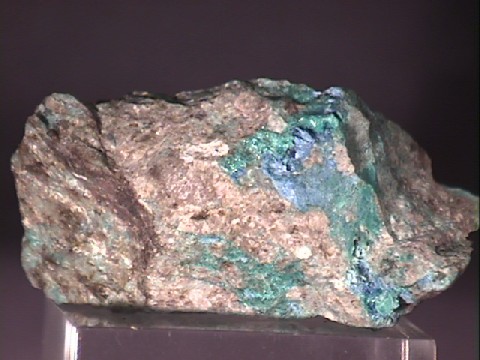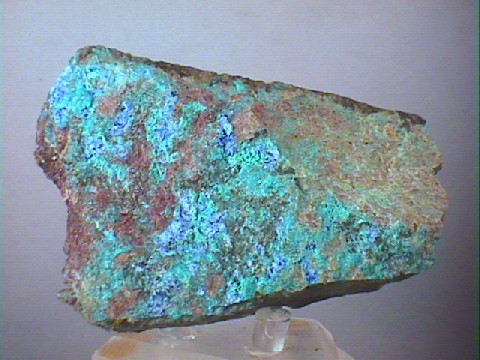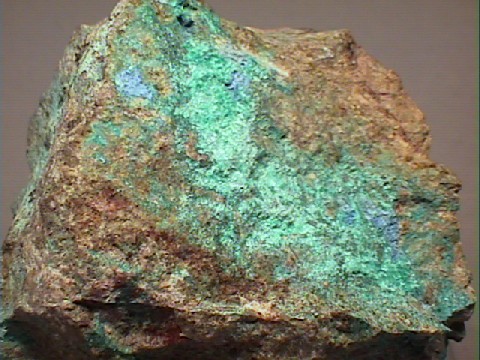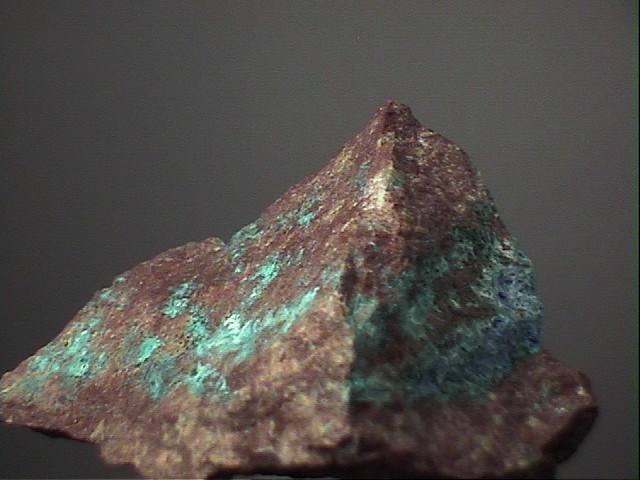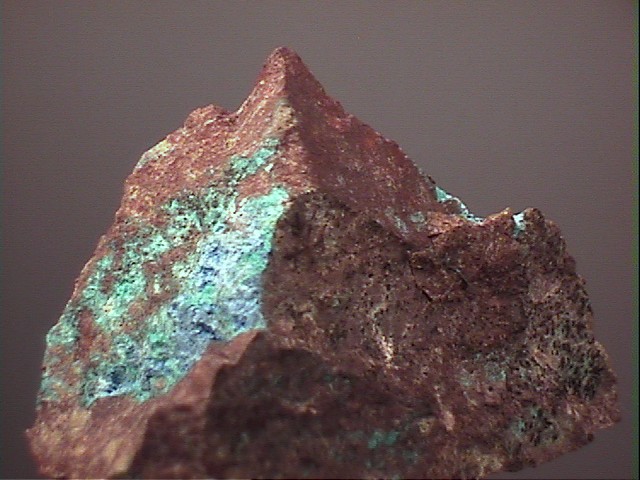 THE
MINERAL SHATTUCKITE
THE
MINERAL SHATTUCKITE
- Chemistry: Cu5(SiO3)4(OH)2, Copper Silicate Hydroxide
- Class: Silicates
- Subclass: Inosilicates
- Uses: A very minor ore of copper and as an ornamental stone.
Specimens
Shattuckite is a relatively rare copper silicate mineral. It was first discovered in the copper mines of Bisbee, Arizona, specifically the Shattuck Mine (hence the name). It is a secondary mineral that forms from the alteration of other secondary minerals. At the Shattuck Mine, it forms pseudomorphs after malachite. A pseudomorph is an atom by atom replacement of a crystal structure by another crystal structure, but with little alteration of the outward shape of the original crystal. Pseudomorph is Greek for "false shape".
Shattuckite, like other copper minerals especially secondary copper
minerals, has a very attractive color and is used as an ornamental stone
when found massive. Shattuckite's beautiful blue color is its best asset.
It can take a good polished and makes nice cabochons, carvings or simple polished stones.
Aggregates of shattuckite are also attractive when found as spherules or sprays of
deep blue acicular radial crystal clusters. Shattuckite is also found with
other rare and/or attractive secondary minerals such
PHYSICAL CHARACTERISTICS:
- Color is a unique deep blue.
- Luster is dull to vitreous.
- Transparency specimens are translucent to opaque.
- Crystal System is orthorhombic.
- Growth Habits include acicular to thin prismatic crystals often found as spherules or sprays of acicular radial crystal clusters. Other habits include massive, fibrous and compact. Also found as pseudomorphs of other secondary minerals such as malachite.
- Cleavage is perfect in two directions.
- Fracture is uneven.
- Hardness is 3.5.
- Specific Gravity is approximately 4.1 (rather heavy for a non-metallic mineral)
- Streak is blue.
- Associated Minerals are quartz,
gold,
limonite,
azurite,
malachite,
alamosite , azurite, "bisbeeite" ( a variety of chrysocolla),luddenite ,fornacite , cerussite, chrysocolla and other secondary copper minerals. - Notable Occurrences are limited to the Shattuck Mine (hence the name), Bisbee, Arizona, USA and a few other secondary copper deposits.
- Best Field Indicators are color, crystal habit, density, locality and associations.

